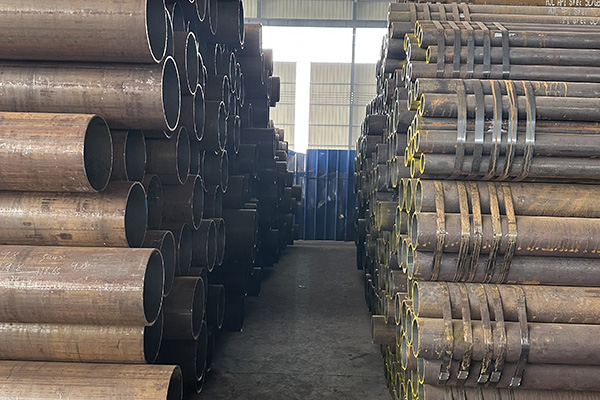

Application of Seamless Steel Pipes in High-Pressure Gas Pipeline Systems
Seamless steel pipes are widely utilized in high-pressure gas pipeline systems due to their superior mechanical properties, reliability, and safety performance. These pipes are designed to withstand the demanding conditions of transporting natural gas and other gases over long distances and under high pressure, making them a critical component in energy infrastructure.
1. High Strength and Pressure Resistance
Seamless steel pipes offer excellent tensile strength and yield strength, allowing them to handle high internal pressures typical in gas transmission pipelines. Their uniform, defect-free structure—without welded seams—provides enhanced pressure-bearing capacity and reduces the risk of failure points.
2. Corrosion Resistance and Durability
Although natural gas pipelines often operate in environments prone to corrosion (underground, underwater, or in chemically aggressive soils), seamless steel pipes can be manufactured from alloyed grades or coated with protective layers to resist corrosion, thus extending service life and ensuring pipeline integrity.
3. Dimensional Accuracy and Structural Integrity
The manufacturing process of seamless pipes ensures tight dimensional tolerances and consistent wall thickness, which are essential for pipeline design and safe operation under fluctuating pressures and temperatures.
4. Adaptability to Harsh Environments
Seamless pipes are preferred in regions with challenging conditions such as deep water, cold climates, or seismic zones. Their superior toughness and resistance to embrittlement at low temperatures improve pipeline reliability.
5. Ease of Fabrication and Installation
Without welded seams, seamless steel pipes reduce the complexity of fabrication, lower the number of weld joints required, and consequently decrease potential leakage points. This also simplifies inspection and maintenance procedures.
6. Compliance with Industry Standards
Seamless steel pipes used in high-pressure gas pipelines typically conform to stringent standards such as API 5L, ASTM A106, and ISO 3183. These standards regulate material properties, testing, and dimensions to ensure safe pipeline operation.
7. Common Applications
Transmission lines transporting natural gas over long distances
Distribution pipelines feeding gas into urban or industrial networks
High-pressure injection and compression systems in gas processing plants
Subsea pipelines in offshore gas fields
Conclusion
Seamless steel pipes are integral to high-pressure gas pipeline systems because of their mechanical strength, corrosion resistance, and structural reliability. Their application enhances safety, operational efficiency, and longevity of gas transport infrastructure under stringent environmental and operational demands.
References:
API 5L – Specification for Line Pipe
ASTM A106 – Standard Specification for Seamless Carbon Steel Pipe for High-Temperature Service
ISO 3183 – Petroleum and Natural Gas Industries – Steel Pipe for Pipeline Transportation Systems
ASME B31.8 – Gas Transmission and Distribution Piping Systems
Zhang, L., & Wang, Y. (2017). Materials for Gas Pipeline Engineering. Elsevier.





